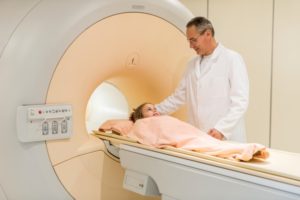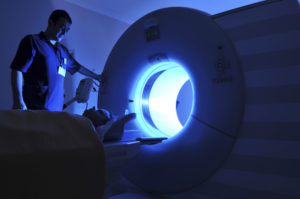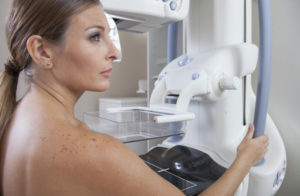The Stages of Cancer and How a Mammogram Can Save Your Life
 You may have heard us say this before: we HATE cancer. You have also heard us say this: Early detection saves lives!
You may have heard us say this before: we HATE cancer. You have also heard us say this: Early detection saves lives!
We will be going deeper into the specifics on saving lives in upcoming posts. For now, the warm-up is explaining the basics of the different stages of breast cancer and how this influences outcome (prognosis). In a short one-sentence summary, the sooner cancer is found, the better your chances for a long and healthy life!
Defining the stages of cancer is not an easy task. In fact, it’s such an important and specific analysis that The American Joint Committee on Cancer (AJCC) has a system which is continually revised in order to define the stages. We will not overwhelm you with details here, although we can point you to some really great resources that DO go into very fine detail.
If you have a greater need to know about staging, the American Cancer Society website has some detailed but very readable material, here as does Breastcancer.org: here. If you are a visual learner, the Mayo Clinic site has a slideshow, here. Our aim is for a basic understanding of the concepts and their bearing on outcomes.
Breast cancer can be diagnosed in stages zero through four. The lower the number the better the outlook. Over time, cancer staging can change. Progression to more advanced or higher stages can occur, especially if left untreated. (Remember how we said, “Early detection saves lives”? Still true.)
The stages of cancer primarily have to do with the size and location of the cancer. We prefer it small, isolated, and killable (because we hate cancer).
Stage zero has a very good prognosis and is also referred to as noninvasive carcinoma in situ (DCIS is a common abbreviation): showing no signs of moving outward or invading beyond where it started, usually in the small ducts of the breast. It means that other normal tissue has not been infiltrated. If we can catch stage zero cancer, the survival rate is greater than 90%! That means… early detection saves lives! (Oh you are going to be so tired of reading that – but you’ll never forget it!)
Stage one breast cancer is still pretty localized: this is a cancer in the breast tissue that has not spread to the lymphatic system. As opposed to stage 0, it is invasive, meaning spread beyond the duct in which it started into adjacent tissue. Stage 1 also means that the tumor is not larger than 2 centimeters. This means a fairly small lesion that may not be palpable (“able to be felt by touching”).
Stage two is a little more complicated because it may refer to a larger tumor or a tumor that has spread into lymphatics. The cancer could be an invasive tumor in the 2-5 centimeter range, and/or it may have spread into other tissues of the body, either the lymph nodes in or near the breast, on the same side as the cancer.
Stage three is what we call “locally advanced.” This means that the tumor is larger than 5 centimeters or that the cancer has spread to other tissue in or near the breast – moving into the lymphatic system or other nearby tissues, like the chest wall.
Stage four is metastatic, meaning that it has spread beyond the breast and lymphatic tissue to other places in the body. This might include the lungs, bones, brain or liver. It is the most serious stage. When looking at 5 year survival, a common tool for evaluating prognosis, overall survival at 5 years with stage IV cancer is only 15%.
We hope this is all you will ever need to know about staging and breast cancer – we wish it didn’t exist! But we will keep fighting for women’s health which means that we will talk about the important issues. The next subject to tackle? Prognosis. Why? Because early detection saves lives!
Image credit: Stages of Cancer by Simplyanon via Wikimedia Commons. Copyright: Creative Commons Attribution-Share Alike 3.0 Unported
Originally published 8/23/13 on mammographykc.com.





